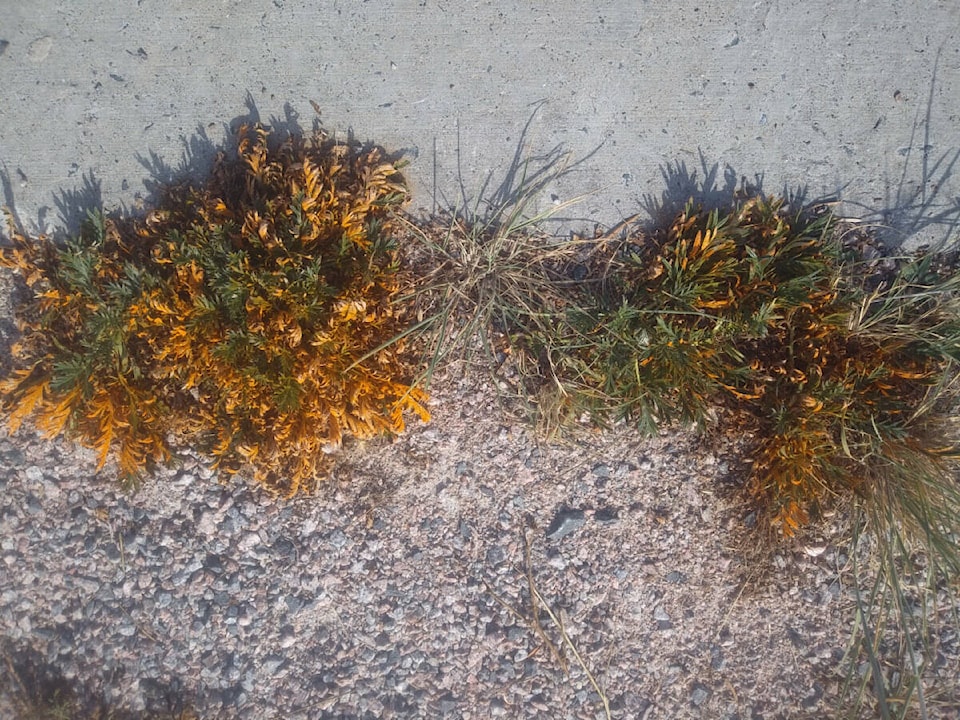Do you ever get the sneezels for no known reason?
You sneeze several times in a row, your nose runs, your eyes water, and it can last for several minutes before it stops and you are back to normal. You’re left wondering, “What just happened?”
Chances are you breathed in something you are sensitive or mildly allergic to and your defense mechanisms kicked in and said let’s get rid of that dust, pollen, spores or irritant. It’s your bodies way of protecting you from a substance in the air that lodged in your nose.
One of the kids I went to public school with was infamous for his sneezing fits. While he sneezed away, several of the kids in the class would count the sneezes just in case he broke his record. In grade 7 or 8, he made it to 12 and everyone clapped and cheered. He even stood up and took a bow — all to the astonishment of our substitute teacher.
It would be interesting if there was a magical pair of glasses that could show you just what’s in the air. Unfortunately, no one has invented them yet so we have to go by clues we can see and use our imagination. Before my last outbreak of sneezels, I had been collecting some seeds from the garden and some plants had a white mould on them, so I suspect that may be the culprit. I suppose I could always go outside and breathe in some more to see if I get the same reaction, but having a bout of the sneezels is not all that pleasant.
An individual spore is so small that it’s very difficult to see unaided, but there are clues about what’s going on. The other day I was walking along the causeway between the Prince of Wales Northern Heritage Centre and the ceremonial circle behind the RCMP building. Along the path I noticed that some small ferns looked like they were turning orange around the edges, as was the ground under them. I looked more closely and under the fronds of the fern were little bumps giving off a very fine orange powder; these were their spores.
Being fall, and with the recent rain, mushrooms or fungi were starting to appear all over the place. Mushrooms are the sex organs of the fungi, and they produce spores as well. So, if you are sensitive to spores, be careful as there will be lots in the air this time of year.
Molds, fungi, equisetum or horsetails, ferns, mosses and lichens evolved long before flowering plants appeared, so they don’t have seeds but produce spores. This gets a little complicated, but if a group of spores gather at the right place under the right conditions, they will reproduce a new plant. One of the problems is they are so small it’s hard to see or figure out just how they do this, but since there are a lot of them around, they are obviously good at doing it. This is bad news if you happen to be allergic or sensitive to the spores.
There are lots of other things in the air or atmosphere that are so small they are difficult to see, so people forget they are there. This summer we had a fair bit of forest fire smoke. One morning I went out and on a dark brown walkway if I looked closely there were little white specks which were forest fire ash that had settled during the night. So, we see the smoke but seldom see the ash it is also carrying.
If one had a pair of glasses that identified the spores from a particular fungus, you could see them floating by in the air and track them back upwind to the particular mushroom so you could pick it. It would make finding and picking mushrooms a whole lot easier.
Also, one might be able to figure out what is causing you to suddenly get a bout of the sneezels and it would give you a whole lot more information about what is in the air. The air currents or winds are always swirling around the planet, and it is amazing how far these tiny spores move, which helps explain why some of them have spread around the globe.
So next time you get the sneezels, spores or pollen may be the cause. Also don’t forget to count your sneezes, you might set a new record.
